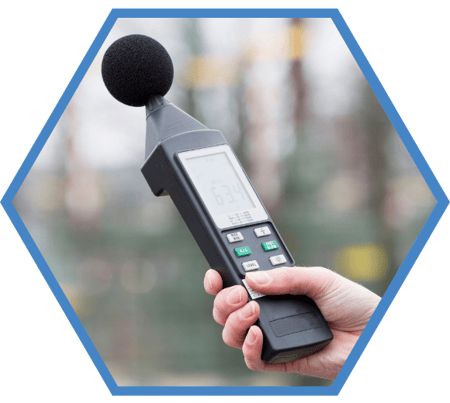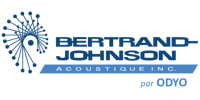CUSTOM EARPLUGS
Selecting Hearing Protection
Based on noise in the workplace

By Jules Pouzot | Operations Manager
To meet the specific needs of each working environment, there are several types of hearing protection, each with its own advantages.
The main types of hearing protection
Custom earplugs
Custom earplugs are specifically designed from a precise mold of each user's ear, offering totally personalized protection. They are made from flexible materials, allowing them to be worn comfortably over long periods.
When to choose custom earplugs?
- High, regular noise levels: If you work in an environment where noise is constant and intense (e.g. in industry), these plugs offer continuous protection, while guaranteeing maximum comfort.
- Prolonged wear: Their perfect fit enables prolonged wear without discomfort, ideal for workers who need to wear them all day long.
- Frequency customization: If certain noises need to be attenuated more than others (e.g., depending on the specific frequencies present in your environment), custom earplugs enable you to choose a filter tailored to your needs.
Why choose this option?
- Perfect fit and comfort, especially for regular, prolonged use
- Customized sound attenuation according to the frequencies specific to your working environment
- Long service life thanks to durable materials lasting up to 5 years.
Disposable earplugs
Made from foam or soft silicone, disposable earplugs are an economical and practical solution for occasional or intermittent use. They are inserted directly into the ear canal and offer moderate sound attenuation.
When should you choose disposable earplugs?
- Moderate to high noise levels: These plugs are suitable for noisy environments where noise levels are high but variable.
- Temporary or intermittent use: If you are only exposed to noise for short periods.
Why choose this option?
- Economical, easy-to-use solution for workers who don't need continuous protection
- Lightweight and practical, especially for environments where plugs need to be removed frequently
- Good sound attenuation, while still allowing certain sounds to pass through
Ear muffs
Earmuffs fully enclose the ear, offering superior protection against high-intensity noise. They are often used in extremely noisy environments, where noise levels are constant and very high.
When should you choose earmuffs?
- Extremely high, constant noise levels: Earmuffs are ideal for very high, continuous noise levels.
- Maximum protection: If maximum sound attenuation is required, and wearing comfort over short periods is acceptable, these devices offer superior protection.
- Maximum noise protection for environments where noise is extremely loud and constant
- Easy to put on and take off quickly, especially for short or intermittent work periods
- Robust option for workers who don't need to wear them continuously all day long
Which is the best choice for you?
The choice of hearing protection depends above all on the noise level to which you are exposed, the duration of exposure, and your need for comfort. Here are a few questions to ask yourself to guide you towards the right type of protection:
- Do you work in a noisy environment all day?
If so, custom-made earplugs will offer you the protection and comfort you need for prolonged wear. - Do you need to use hearing protection fairly infrequently?
Disposable plugs are easy to handle and economical for intermittent use. - Is the noise level in your environment very high and constant?
Earmuffs offer superior protection in these conditions.
Whether you're exposed to high-intensity noise all the time, or need temporary protection in a variable environment, Bertrand-Johnson Acoustics offers tailor-made solutions. Our experts are there to advise you and help you choose the hearing protection that will perfectly meet your needs, while guaranteeing comfort and safety.
Contact us today for advice on choosing the ideal hearing protection for your working environment.


Measure the risk with our noise measurement services
Identify noise risks early on in your hearing loss prevention program and develop an action plan to reduce the risks.

-1.png?width=144&height=72&name=BJA%20_%20Logo%20Color%20%20(1)-1.png)